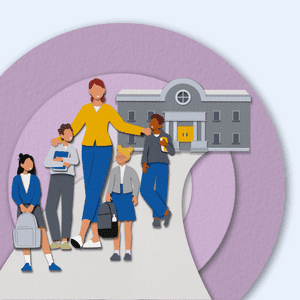June marks the start of Pride Month, which is an excellent time to begin (or continue!) talking with students about the LGBTQ+ community and the fight to achieve equity and justice.
In addition to celebrating the LGBTQ+ community, Pride Month also commemorates the 1969 Stonewall Uprising in Manhattan, which was a tipping point for the Gay Liberation Movement.
Here are some relevant resources and lesson plans that can be easily incorporated into end-of-year instruction to teach students about the significance of these topics.
Lesson plans:
ADL.org includes a number of LGBTQ+ Pride Month lesson plans for students ranging from elementary to high school, covering topics such as:
At WeTeachNYC, educators can access a collection of Pride Month lessons on gender and identity along with articles, videos, and FAQs designed to help foster learning environments in which all students feel safe and respected.
Welcoming Schools offers a number of downloadable lesson plans for grades K-8 to help foster equity and acceptance in the classroom, such as Love Makes a Family for grades K-5 and A Look at LQBTQ History and Prominent LQBTQ People for grades 3-6.
Literature
Elementary
- ‘Twas the Night Before Pride — Joanna McClintick
- Julian is a Mermaid — Jessica Love
- Ho’onani: Hula Warrior — Heather Gale
Middle school
- Spin with Me — Ami Polonsky
- Thanks a Lot, Universe — Chad Lucas
Young adult
- Milo and Marcos at the End of the World — Kevin Christopher Snipes
- Last Night at the Telegraph Club — Malinda Lo
- How it All Blew Up — Arvin Ahmadi
- The Music of What Happens — Bill Konisberg
If you’re looking for even more resources, Educators for Social Change links out to a number of lesson plans, articles, and additional resources to teach about Pride Month and the LGBTQIA+ community. School Library Journal additionally suggests a number of books with LGBTQIA+ characters or themes that are great to read with students this month or anytime throughout the year.
*Swing recommends that substitute teachers get all outside teaching resources approved by the school prior to sharing with students.
As always, it’s important to not isolate this curriculum to the summer months. All students deserve to be represented in lesson plans, just as all students can benefit from a well-rounded education. Take this month as an opportunity to resent and incorporate fresh perspectives into the classroom.






